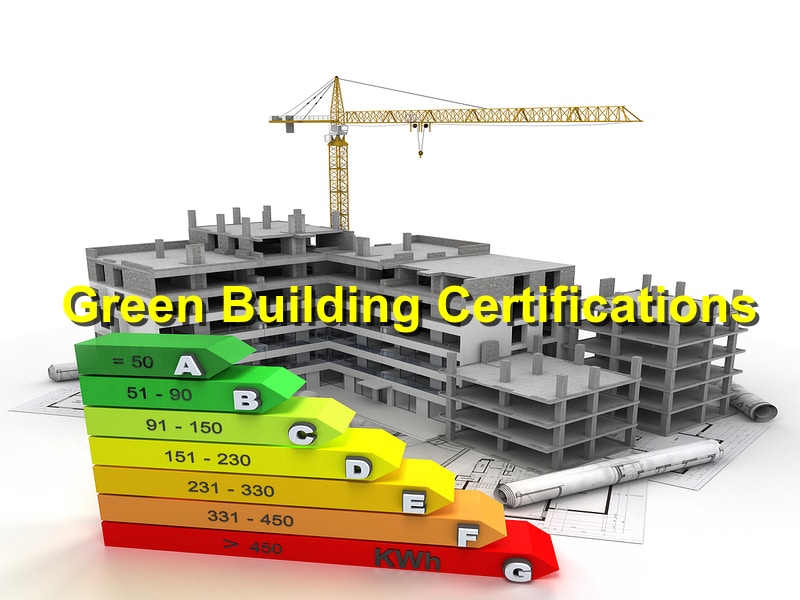Sustainability has become more than just a buzzword in commercial construction—it’s now a standard expectation. As environmental concerns grow and clients prioritize eco-conscious choices, green building certifications like LEED (Leadership in Energy and Environmental Design), WELL, and Green Globes are helping guide the industry toward a more responsible future.
These certifications serve as benchmarks for sustainable construction and offer a range of benefits that go beyond environmental impact. They can influence everything from operating costs to employee health and long-term asset value. In today’s competitive commercial landscape, understanding the advantages of green building certifications is essential for developers, contractors, and property owners alike.
1. Improved Energy Efficiency and Operational Savings
One of the primary goals of green building certifications is to reduce energy consumption. Certified buildings often feature energy-efficient systems such as advanced HVAC, LED lighting, and high-performance windows.
Key benefits:
- Lower utility bills due to reduced electricity and water usage.
- Optimized building performance through systems designed to operate at peak efficiency.
- Energy modeling and monitoring to continuously improve energy use over time.
Buildings that meet green standards typically use 25–30% less energy than non-certified counterparts, offering significant cost savings throughout the building’s life cycle.
2. Increased Property Value and Marketability
Green certifications are more than a feel-good label—they’re a powerful marketing tool. Environmentally certified commercial buildings often command higher rental rates, sell faster, and maintain stronger resale value.
Why this matters:
- Attracts premium tenants who prioritize sustainability and corporate social responsibility.
- Enhances brand image for companies operating in certified buildings.
- Qualifies for financial incentives, such as tax credits or green loans from banks and municipalities.
As ESG (Environmental, Social, and Governance) goals gain prominence in corporate strategies, companies are actively seeking spaces that align with their environmental commitments.
3. Healthier Indoor Environments
Certifications like WELL and LEED take into account the health and wellness of building occupants. This includes air quality, natural lighting, ergonomic design, and access to clean water.
Benefits to occupants:
- Reduced sick days and absenteeism from better indoor air and less exposure to pollutants.
- Increased productivity due to natural lighting and noise control.
- Improved occupant satisfaction and mental well-being.
Health-conscious workspaces are especially valuable in the post-pandemic era, where employers are looking for ways to support employee wellness and retention.
4. Compliance with Environmental Regulations
Green building certifications help ensure a project stays ahead of current and future regulatory requirements. Many local and federal governments are tightening energy codes and environmental standards.
Compliance advantages:
- Avoid costly retrofits by meeting or exceeding upcoming legislation from the start.
- Qualify for expedited permits or zoning approvals in cities promoting sustainable development.
- Reduce liability by demonstrating a documented commitment to responsible practices.
Staying proactive in this area positions developers as forward-thinking leaders in the industry.
5. Reduced Environmental Impact
The core purpose of green certifications is to promote eco-friendly construction and operation. This includes sourcing sustainable materials, reducing construction waste, and minimizing carbon footprints.
Environmental benefits:
- Lower greenhouse gas emissions from both materials and building operations.
- Waste diversion goals, such as recycling at least 50% of construction debris.
- Water conservation systems, including rainwater harvesting and low-flow fixtures.
These environmentally conscious decisions not only protect the planet but also build community trust and investor confidence.
6. Enhanced Reputation and Stakeholder Trust
Earning a green building certification signals to clients, investors, and the public that your company takes sustainability seriously. It demonstrates leadership and responsibility in a growing area of interest for stakeholders.
Why reputation matters:
- Strengthens community relations by showcasing commitment to local environmental goals.
- Improves public perception of your company or development.
- Builds investor confidence by aligning with ESG investing priorities.
A certified building can act as a flagship for a brand’s commitment to innovation and environmental responsibility.
7. Access to Financial Incentives and Grants
Many jurisdictions offer incentives for buildings that meet green certification criteria. These may come in the form of tax credits, fee reductions, grants, or priority access to financing.
Potential financial perks:
- Local tax abatements for energy-efficient upgrades.
- State or federal grant programs supporting green infrastructure.
- Reduced insurance premiums for certified properties due to improved risk profiles.
These savings can offset the initial investment in green materials or certification fees, making sustainability a smart financial choice.
8. Better Project Planning and Quality Control
The certification process requires detailed planning and documentation, which naturally leads to better construction quality and attention to detail.
Benefits during construction:
- Improved material selection based on performance and sustainability.
- Greater accountability with third-party verification processes.
- More rigorous QA/QC standards, reducing errors and delays.
A more organized and intentional building process leads to fewer change orders, better timelines, and higher client satisfaction.
Conclusion: Building Smarter for a Sustainable Future
Green building certifications are no longer niche—they’re becoming the standard for responsible, forward-thinking commercial construction. From operational savings and healthier work environments to enhanced market appeal and regulatory alignment, the benefits are far-reaching.
Whether you’re designing a new office building, hospital, or retail center, investing in green certification is an investment in long-term success. As sustainability continues to shape consumer demand and government policy, embracing these practices is essential not just for the planet, but for your bottom line.
References: ProToolSupply, NASP




